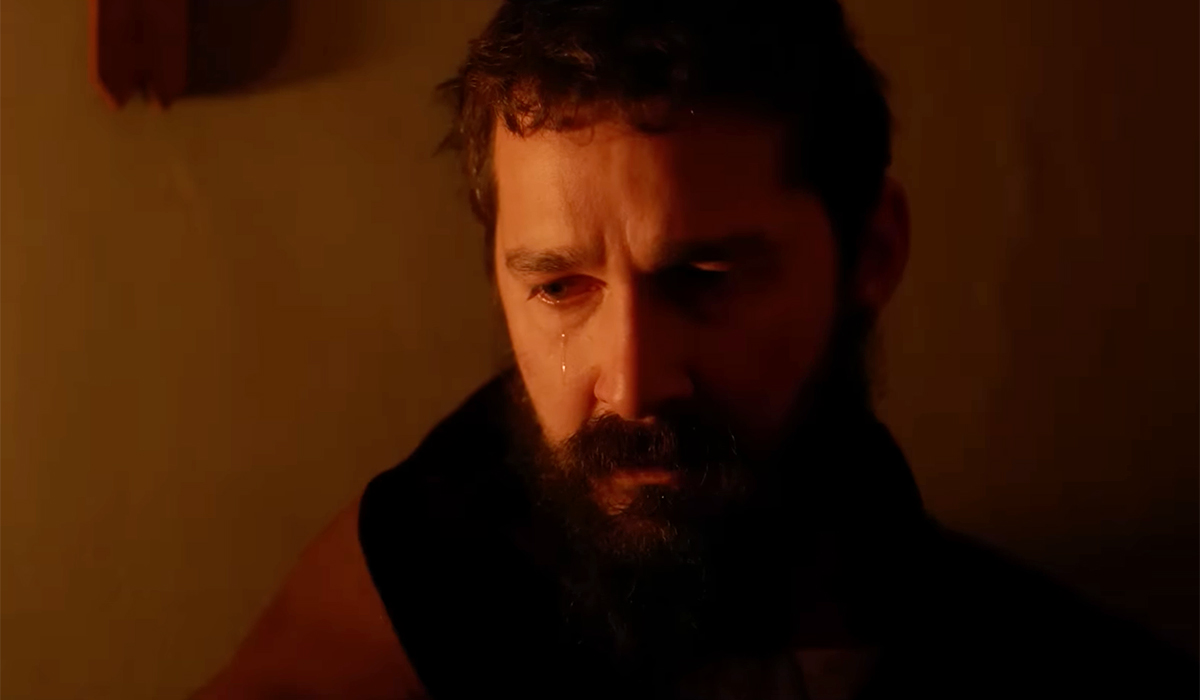


Will movie historians record the prevarications, corruptions, and downright asininities of this era? That question arises after viewing Abel Ferrara’s Padre Pio, putatively about Francesco Forgione, who was canonized Saint Pio of Pietrelcina in 2002 by Pope John Paul II. Fact is, the film, with its split between biopic and specious political allusion, is a casualty of these times.
This is Bronx-born Ferrara’s latest entry in his ongoing project (Tommaso, Pasolini) to explore his Italian heritage, specifically through a contemporary American’s personal reinterpretation of that country’s great cinema. He attempts to square that legacy with the problems of Millennial masculinity, art-making, and politics.
Ferrara aligns Forgione’s agon with the self-conscious struggles of modern agnostics — Pio’s mysticism is interpreted by actor-activist Shia LaBeouf in terms of secular anguish, familiar from Ferrara’s American-set exploitation/art movies The Funeral, Bad Lieutenant, and The King of New York. Surprisingly, Ferrara’s sleaze/art exploitation films are genuine expressions of modern spiritual uncertainties — actors from Christopher Walken and Vincent Gallo to Harvey Keitel and Willem Dafoe have given him authentic portrayals of the kind of New York temperament that most people credit to Sidney Lumet’s upscale histrionics.
In Padre Pio, Ferrara collaborates with LaBeouf on a profound subject and in a period setting (Southern Italy in 1918, following World War I) but fails to serve his usual mission. Padre Pio becomes a work of deluded, semi-improvisational navel-gazing: Ferrara examines the social issues of post-war Italian peasants who were entranced by the false promise of socialism — out of desperation and hope, they kissed the red flag presented by itinerant revolutionaries. He then contrasts that to Forgione’s struggle with faith.
Ferrara’s typical mix of proletarian and spiritual suffering might seem blasphemous if it weren’t so simple-minded. The intricacy of politics and religious morality — the essential paradox of Italy’s Marxist intellectuals achieving great cinematic humanism — overwhelms Ferrara’s laborious method. His own crude sincerity lacks the splendid moral, historical clarity of Monicelli’s The Organizer (1963) and Bertolucci’s grand myth of Italian socialism, 1900 (1976). Scenes show Forgione’s torment: “Many are the sins that impede the flight of my soul. If you lift your spirit up in prayer, the Lord will show you the design he has for you.” But he goes no deeper than Lili Taylor’s similar self-flagellation in Ferrara’s vampire movie, The Addiction. LaBeouf’s carefully untrimmed beard makes him a troubled figure, unlike Keanu Reeves’s beatific Siddhartha in Little Buddha. The actorly psychosis is too much like LaBeouf’s infamous 2016 “He Will Not Divide Us” political installation at the Museum of the Moving Image. (Ferrara’s LaBeouf problem is the subject of Maureen Mullarkey’s essential Studio Matters essay, “When Shia Agonistes Forgot How to Breathe.”)
Ferrara falls short not only of The Organizer and 1900 but also such masterpieces as Visconti’s La Terra Trema (1948), Rossellini’s The Flowers of St. Francis (1950), Rosi’s Salvatore Giuliano (1962), and Pasolini’s The Gospel According to St. Matthew (1964).
Padre Pio is not a film of faith, yet despite two strong scenes that test our belief or disbelief in miracles — scenes Mel Gibson could have directed with his eyes closed — Ferrara manages to address our current spiritual war and social crisis. Using Blind Willie Johnson’s blues moaning and guitar to underscore Italian peasant labor exposes Ferrara’s mundane liberal sanctimony — as does the film’s extraneous dedication “to the people of Ukraine.”
Ferrara’s naïve, sentimental socialism is epitomized when a Catholic peon remembers that “the Bible said it is difficult for a rich man to enter heaven,” and a socialist responds, “Marx said so, too, in his own way.” Ferrara seems no smarter than those peasants when his film implies very contemporary fascist/socialist confusion and imputes partisan accusations.
The movie’s failure illustrates that, of the many paths to achieving social vision and spiritual expression (Mel Gibson’s, Martin Scorsese’s, Terrence Malick’s), Ferrara’s struggle and improvisation in Padre Pio is the most distressingly fashionable.
